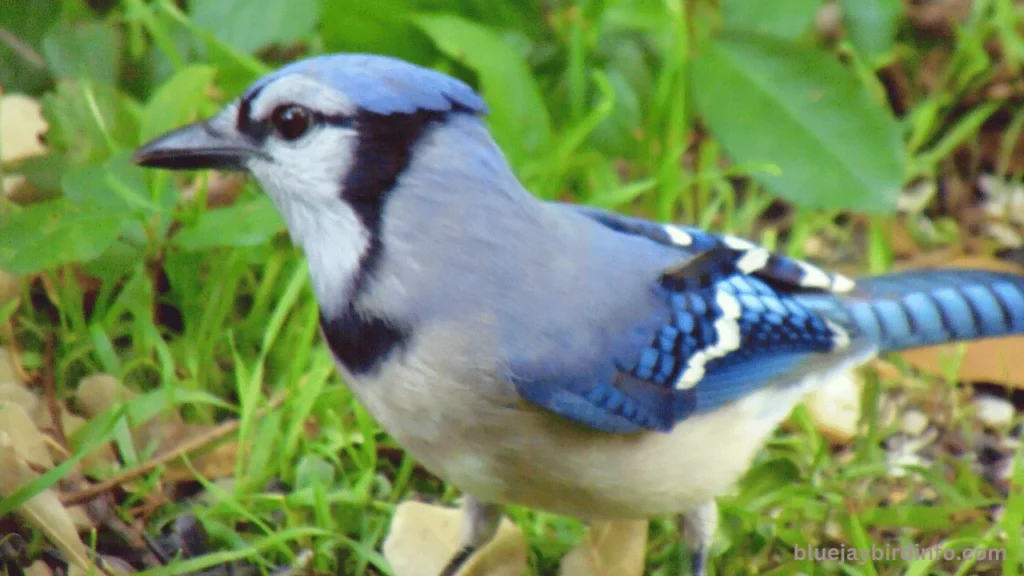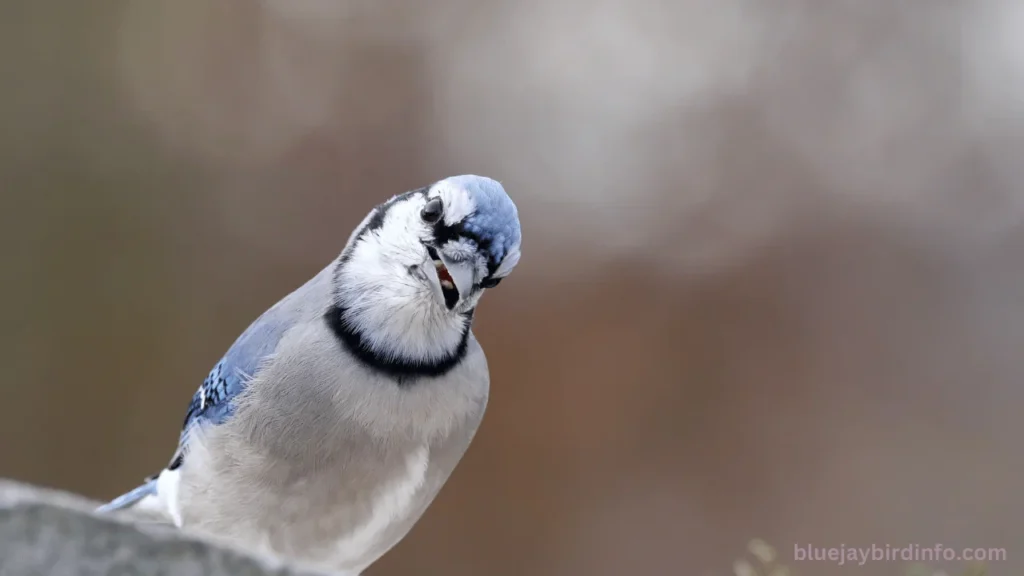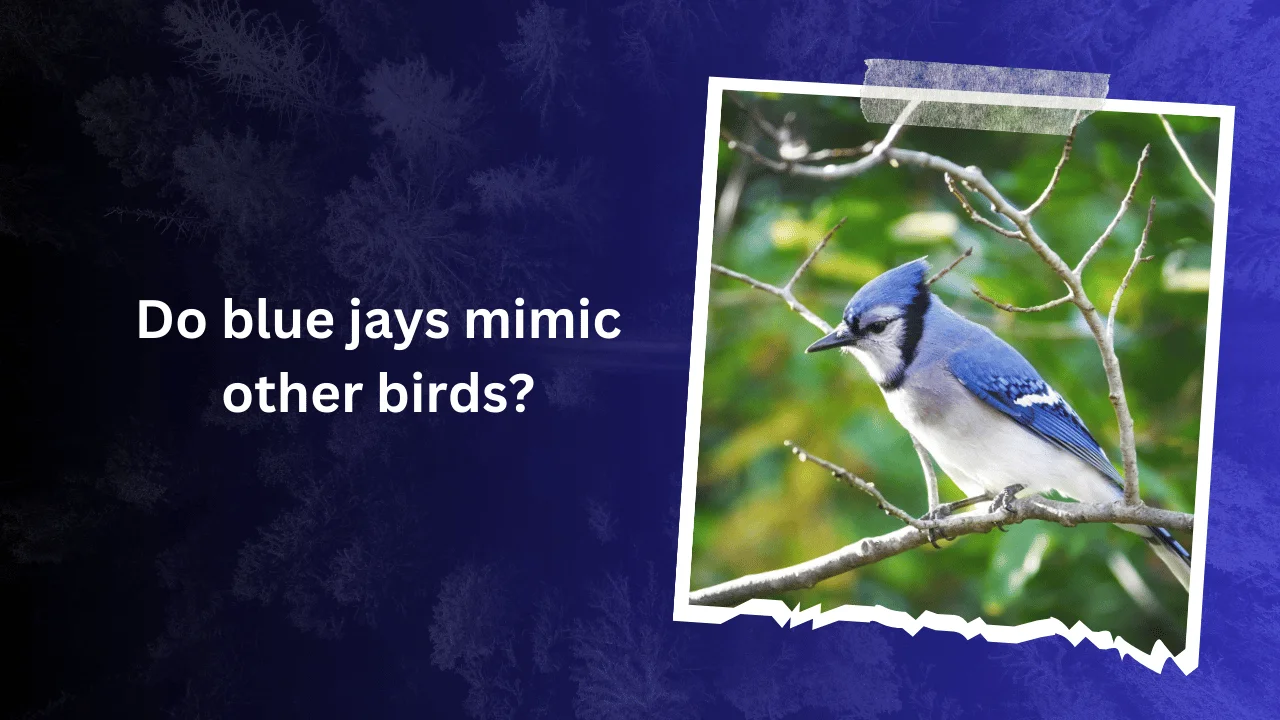Imagine strolling through a peaceful park, enjoying the symphony of birdsong.
Suddenly, a familiar, harsh “caw” pierces the air. You turn to see a bold blue jay perched on a branch, but wait – is that a hawk screech mixed in with its call? Can blue jays, those boisterous backyard visitors, actually mimic other birds?
The answer might surprise you. While blue jays aren’t exactly mockingbirds, renowned for their incredible repertoire of imitations, they do possess a hidden talent for mimicry. This blog post delves into the fascinating world of blue jay vocalizations, exploring whether and how these clever birds can mimic other species.
We’ll sift through scientific studies, analyze anecdotal reports, and uncover the potential reasons behind this intriguing behavior. So, grab a cup of coffee, settle in, and prepare to be amazed by the vocal versatility of the blue jay!
Contents
Blue Jay Vocalizations
Blue jays are known for their diverse vocal repertoire, which includes a variety of calls, songs, and screams. These vocalizations serve various functions within their social structure and interactions.
- Territorial defense: Blue jays use their calls to mark their territory and deter intruders, whether they are other blue jays or competing species.
- Mate attraction: They also employ specific vocalizations to attract potential mates and communicate their readiness to breed.
- Social interactions: Blue jays use calls to maintain social bonds within their flocks, coordinate group activities, and exchange information about food sources or predators.
Mimicry is a common behavior among many bird species, and blue jays are no exception. They have been observed to mimic the calls of other birds, including hawks, crows, and even other blue jays.
This ability can serve various purposes, such as deterring predators or attracting mates. By mimicking the calls of other birds, blue jays can create a sense of confusion or deception, potentially leading to their own survival or reproductive success.
Evidence for Mimicry
While there is anecdotal evidence of blue jays mimicking other birds, scientific studies specifically investigating this behavior are limited.
Many of the claims of blue jay mimicry are based on eyewitness accounts and personal observations. However, it’s important to note that these accounts may not always be accurate, as there could be other explanations for the observed similarities in vocalizations.

Sound analysis techniques can be used to compare the vocalizations of blue jays to those of other bird species. By analyzing the pitch, frequency, and other characteristics of their calls, researchers can identify similarities and potential mimicry.
However, it’s important to consider the possibility of accidental similarities or convergent evolution, where different species develop similar traits independently.
Factors Influencing Mimicry
Cognitive abilities play a crucial role in the ability of birds to mimic other species. Blue jays are known for their intelligence and problem-solving skills, which may contribute to their capacity for learning and imitating different vocalizations.
These cognitive abilities allow them to recognize and reproduce the sounds of other birds.
Social interactions with other bird species can also influence blue jay vocalizations and their potential for mimicry. By observing and interacting with other birds, blue jays may learn new sounds and incorporate them into their own repertoire. This could be particularly beneficial for young birds that are still developing their vocal skills.
Selective pressures may have played a role in the evolution of mimicry in blue jays. For example, the ability to mimic the calls of predators or competitors could provide a survival advantage by deterring threats or gaining access to resources.
Additionally, mimicry could be used to attract mates by imitating the calls of preferred partners.
Mimicked Species
Blue jays have been observed to mimic a variety of bird species, including hawks, crows, and even other blue jays. The specific species that they mimic can vary depending on their geographic location and the types of birds they encounter.
One potential reason for blue jays to mimic hawks is to deter predators. By imitating the calls of a powerful predator, blue jays may be able to scare off potential threats. Additionally, mimicking the calls of other blue jays can be a useful strategy for establishing dominance within a flock or territory.
By imitating the call of a more dominant individual, a blue jay may be able to assert its status and influence the behavior of others.
Comparative analysis of blue jay vocalizations and those of the species they mimic can help to identify similarities and differences.
By examining the pitch, frequency, and other characteristics of their calls, researchers can determine whether blue jays are truly mimicking other species or simply producing similar sounds by coincidence.
Conservation Implications
Preserving healthy habitats is crucial for the survival of blue jays and other bird species. Habitat loss and degradation can have a significant impact on their populations and their ability to reproduce and thrive.
By protecting forests, woodlands, and other natural areas, we can ensure that blue jays and other birds have the resources they need to survive.
Human-wildlife interactions can also have an impact on blue jay behavior and their interactions with other species. For example, the presence of bird feeders can attract a variety of bird species, including blue jays and potential prey. Understanding these interactions can help us to minimize conflicts and promote coexistence between humans and wildlife.
Further research is needed to better understand the phenomenon of blue jay mimicry. By studying the cognitive abilities of blue jays, their social interactions, and the specific species they mimic, we can gain valuable insights into their behavior and the potential benefits or drawbacks of mimicry.
This information can also help us to develop effective conservation strategies to protect blue jay populations and their habitats.

Conclusion
In conclusion, blue jays are fascinating birds with a complex repertoire of vocalizations. While they are not known for their extensive mimicry abilities, they have been observed to mimic the calls of other birds, particularly during territorial disputes or social interactions.
The ability to mimic can be a valuable tool for deterring predators or attracting mates.
However, it’s important to note that the evidence for blue jay mimicry is primarily anecdotal. More scientific research is needed to definitively establish their ability to mimic other species and to understand the underlying mechanisms involved.
By studying blue jay vocalizations and their interactions with other birds, we can gain valuable insights into the complexity of avian communication and the potential benefits of mimicry. This information can also contribute to our understanding of the social behavior and ecology of blue jays.
Also, read other articles related to Blue Jay Habits!
FAQ’s
Can blue jays mimic human speech?
While blue jays are known for their ability to imitate other bird sounds, there is no evidence to suggest that they can mimic human speech.
Do blue jays mimic other birds to deceive them?
Yes, blue jays may mimic other birds to deceive predators or attract mates. By imitating the calls of a more powerful species, they can deter potential threats or signal their readiness to mate.
How do blue jays learn to mimic other birds?
Blue jays likely learn to mimic other birds through observation and practice. They may listen to the calls of other species and then attempt to reproduce them.
Are there other bird species that can mimic other birds?
Yes, many other bird species are known for their mimicry abilities, including mockingbirds, lyrebirds, and mynah birds.
What are the benefits of mimicry for blue jays?
Mimicry can provide blue jays with various benefits, such as deterring predators, attracting mates, or establishing dominance within a group.
Can blue jays mimic other animals besides birds?
While there is no evidence that blue jays can mimic other animals, they have been known to imitate human sounds, such as whistles or car alarms.








